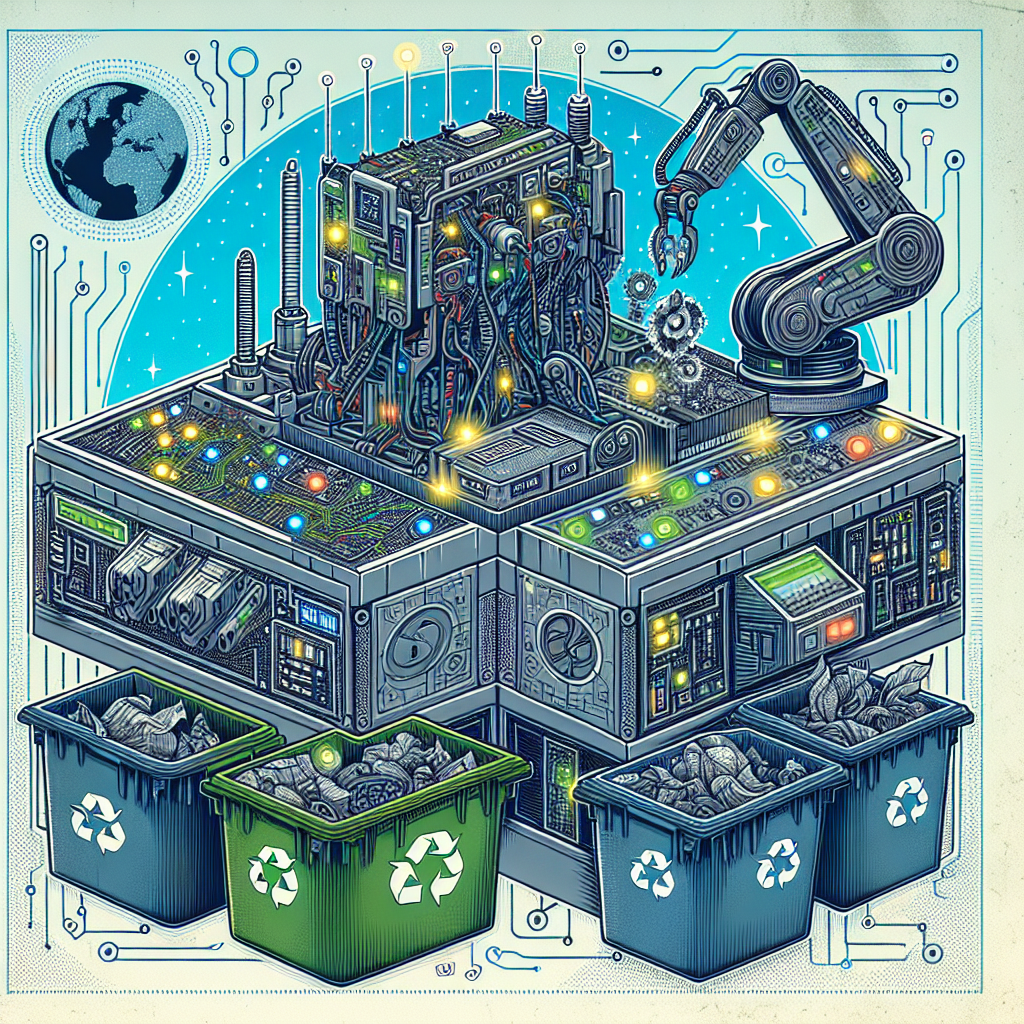The Potential of AI Development in Waste Management
Waste management is a critical issue facing societies around the world. With increasing populations and consumerism, the amount of waste being generated is also on the rise. This has led to a growing need for more efficient and sustainable waste management solutions. Artificial intelligence (AI) has the potential to revolutionize the way waste is managed, offering new opportunities for improved efficiency and effectiveness.
AI technologies can be used in various aspects of waste management, from collection and sorting to recycling and disposal. By leveraging the power of AI, waste management companies can optimize their processes, reduce costs, and minimize environmental impact. In this article, we will explore the potential of AI development in waste management and discuss how it can help address some of the key challenges facing the industry.
1. Collection and Transportation
One of the key areas where AI can make a significant impact in waste management is in the collection and transportation of waste. AI-powered systems can help optimize collection routes, schedule pickups more efficiently, and reduce fuel consumption by minimizing unnecessary trips. By analyzing data on waste generation patterns, traffic conditions, and other relevant factors, AI algorithms can help waste management companies plan their collection activities more effectively.
AI can also be used to improve the monitoring and maintenance of waste collection vehicles. By equipping trucks with sensors and connected devices, companies can track the location, status, and performance of their fleet in real-time. This allows for proactive maintenance and troubleshooting, reducing downtime and improving overall operational efficiency.
2. Waste Sorting and Recycling
Another area where AI can play a crucial role in waste management is in the sorting and recycling of materials. Traditional waste sorting facilities rely on manual labor to separate different types of materials, such as paper, plastic, metal, and glass. This process is time-consuming, labor-intensive, and prone to errors.
AI technologies, such as computer vision and machine learning, can automate the sorting process and improve the accuracy and efficiency of waste sorting facilities. By using cameras and sensors to identify and classify different types of materials, AI systems can help separate recyclable materials from non-recyclable waste more effectively. This not only speeds up the sorting process but also increases the recovery rates of valuable materials, such as plastics and metals.
AI can also help optimize recycling processes by predicting material demand, identifying potential markets for recycled materials, and streamlining supply chain logistics. By analyzing data on material composition, market trends, and environmental regulations, AI algorithms can help waste management companies make more informed decisions about how to best recycle and repurpose their waste streams.
3. Landfill Management
AI technologies can also be used to improve the management of landfills, which are the final destination for much of the waste generated by society. By monitoring landfill conditions, such as waste composition, temperature, and gas emissions, AI systems can help predict and prevent potential environmental hazards, such as leachate contamination and methane emissions.
AI can also be used to optimize landfill operations, such as waste compaction and cover placement, to maximize landfill capacity and minimize environmental impact. By analyzing data on waste deposition rates, landfill topography, and weather patterns, AI algorithms can help waste management companies better manage their landfill sites and extend their useful life.
FAQs
Q: How can AI technologies help reduce waste generation?
A: AI can help reduce waste generation by optimizing supply chain logistics, improving product design, and promoting sustainable consumption practices. By analyzing data on consumer behavior, market trends, and environmental impact, AI algorithms can help businesses make more informed decisions about how to minimize waste generation and maximize resource efficiency.
Q: Are there any potential drawbacks to using AI in waste management?
A: While AI technologies offer many benefits for waste management, there are also potential drawbacks to consider. These include concerns about data privacy and security, the risk of job displacement due to automation, and the environmental impact of producing and disposing of AI hardware. It is important for waste management companies to carefully consider these factors and implement appropriate safeguards to mitigate any potential risks.
Q: How can waste management companies get started with AI development?
A: Waste management companies looking to leverage AI technologies should start by identifying their specific needs and goals, conducting a thorough assessment of their current processes and technologies, and building a solid foundation of data and infrastructure. By working with AI developers, data scientists, and other experts, companies can develop customized AI solutions that address their unique challenges and opportunities in waste management.
In conclusion, the potential of AI development in waste management is vast and promising. By harnessing the power of AI technologies, waste management companies can optimize their processes, reduce costs, and minimize environmental impact. From collection and transportation to sorting and recycling, AI can help revolutionize the way waste is managed, making our society more sustainable and resilient in the face of growing waste challenges. It is crucial for waste management companies to embrace AI and explore its potential to drive innovation and positive change in the industry.

